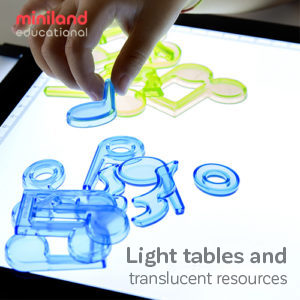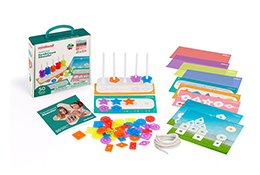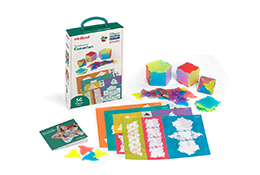These four skills — known as the 4 Cs — enable the 21st Century child to practically apply their intelligence and content knowledge in the fluid, real-world circumstances they’ll encounter beyond home and school.
According to the National Education Association, this is especially important because a person meeting the world of work with a fixed skill-set will become increasingly redundant. So, the focus has to shift towards learning how to learn, rather than what is learned, to ensure children will take their place in society as self-sufficient innovators.
What’s play got to do with it?
The best way to develop these skills is through play. We often say we can “tell the difference” between a child that’s playing and one that’s learning. The one playing is inherently having fun. But play is an important form of learning and provides a positive space for the 4 Cs to grow. According to The Lego Foundation, play:
- Involves active, engaged and iterative thinking
- Taps into a broad set of skills and content knowledge simultaneously
- Allows opportunity to connect factual and conceptual knowledge to real-world experiences while exploring their implications.
Ways to develop the 4 Cs through play
Play can support the development of the 4 Cs in your classroom by being the best medium to inspire deeper learning. Here’s a cheat-sheet on what the 4 Cs are, and some educational toys that will take the stress out of your 4 C-friendly lesson planning:
-
Critical Thinking
Critical thinkers understand the implications of their actions, reflecting on any issue from multiple perspectives. The collaborative mosaic-type game, Dictate & Shape especially stimulates this ability by requiring the creation of composite shapes from smaller parts, according to particular sets of fun instructions.
.jpg?width=500&name=Miniland%20Blogimage%20500x180%20(1).jpg)
-
Communication
Communication centers on the ability to express your thoughts, and also to receive the thoughts of others. Developing these skills in a child is important for their successful social integration in later life, and also to unlock their ability to learn from their peers. A literacy-based game — like ABC Monster — requiring active listening and teamwork, is perfect when wanting to focus in on this area as part of your hidden curriculum.
-
Collaboration
Collaboration and communication skills are particularly intertwined — being good at one relies on great skills in the other. Collaboration centers on the ability to listen and respond, and this, in turn, requires a high degree of empathy. For this reason, games that develop emotional intelligence and rely on teamwork are especially useful. BBQ Emotions! and MindFul KIDS are just two examples of aids you can use when fostering a culture of emotional self-regulation and self-reflection in your classroom.
-
Creativity
This form of innovation is integral to a wide range of skills, such as scientific thinking, entrepreneurship, design thinking and mathematics. Creative skill stimulates ideas production, verbal fluency, mental flexibility, and originality. Games reliant on imaginative play and visualization, such as Follow the Big Foot, provide useful opportunities for children to exercise creative thinking.

The good news is that nothing occurs in isolation. By integrating just one of these aids into your classroom, you’ll have a tool that helps you develop a range of skills in the children under your care. For instance, the game ABC Monster simultaneously develops motor coordination while working on the 4Cs.
Explore Miniland’s Multiplay catalog today, to discover the benefits of robust multi-purpose child-centered educational toys designed to give you value for money while maximizing educational gain.




